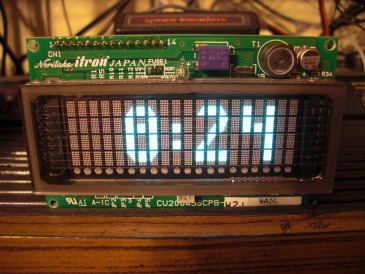I decided to try using GNOME Terminal with ugly fonts — that is, bitmap fonts which are not anti-aliased. The goal of this experiment was to improve terminal performance when scrolling large amounts of information in a big window. At the end of the day, the performance was not improved in my case. (I have my monitor rotated 90° for a portrait display, and I think my use of rotation may be a bottleneck for my graphics throughput.)
However, I decided to keep the ugly fonts anyway, since it seems to allow me to use smaller fonts without sacrificing legibility.
Since there were a few steps involved in forcing the terminal to use ugly fonts, without allowing the ugliness to spread to other applications, I decided to document my findings here.
Finding ugly fonts to use
Some modern systems may not ship with fonts which are sufficiently ugly. Hongli Lai has
written about this on his blog, and provides the MiscFixed font for download. I downloaded and installed this font.
Configuring Fontconfig to allow ugly fonts
Surprisingly, the MiscFixed font is not available in GNOME Terminal's font selection dialog box, even after I installed it! It turns out that modern systems (or at least my Ubuntu 8.04), in a noble effort to protect delicate users from the shock of seeing ugly fonts at any cost, have actually configured Fontconfig (the system font manager) to reject bitmap fonts.
Fontconfig can be reconfigured to allow bitmap fonts, for those of us who aren't afraid of cutting ourselves on the sharp edges of these harshly defined glyphs. Most of the Fontconfig configuration is in the form of symbolic links to XML fragments in the /etc/fonts/conf.d directory. I found the link which disallows bitmap fonts (70-no-bitmaps.conf on my system) and replaced it with a link which permits these fonts (../conf.avail/70-yes-bitmaps.conf on my system). Lo and behold, the ugly MiscFixed font appeared in the terminal's font selection dialog box for my enjoyment!
Unfortunately, my elation was short-lived. Other applications inexplicably starting preferring ugly fonts over the beautiful anti-aliased TrueType fonts they previously used. In particular, my web browser began to render most web pages with fonts which were not just ugly, but bitmap-scaled into horrifying contortions. After my eyes stopped bleeding and I completed several rounds of post-trauma counseling, I decided I needed a way to have a special configuration of Fontconfig just for the terminal.
Using an alternate Fontconfig configuration
First, I set up an alternate copy of the Fontconfig configuration by copying /etc/fonts/fonts.conf to fonts-bitmap.conf. I also made a copy of the /etc/fonts/conf.d subdirectory as conf-bitmap.d, configured it to allow bitmap fonts, and changed the new fonts-bitmap.conf to use it.
According to the
Fontconfig documentation,
I should be able to run applications with the FC_CONFIG_FILE environment variable set to the new configuration file, and have them use the alternate configuration. This didn't work for me — GNOME Terminal used the system configuration regardless. Perhaps my system is too old, or too new, or maybe Pango's use of Fontconfig interferes.
In my quixotic quest for ugly fonts, I wrote a small wrapper library which, when preloaded into an application with LD_PRELOAD, will intercept calls to open(). Requests to open the fonts.conf file will be remapped to open the fonts-bitmap.conf file instead. For convenience, I configured a launcher icon in the GNOME Panel to run the terminal with my wrapper library using the following command line:
sh -c "LD_PRELOAD=~/work/fc-config-override/fc-config-override.so exec gnome-terminal"
Using this method, I can now use ugly fonts in the terminal, while using attractive fonts in all other applications. A link to the wrapper library is below.
Download:


